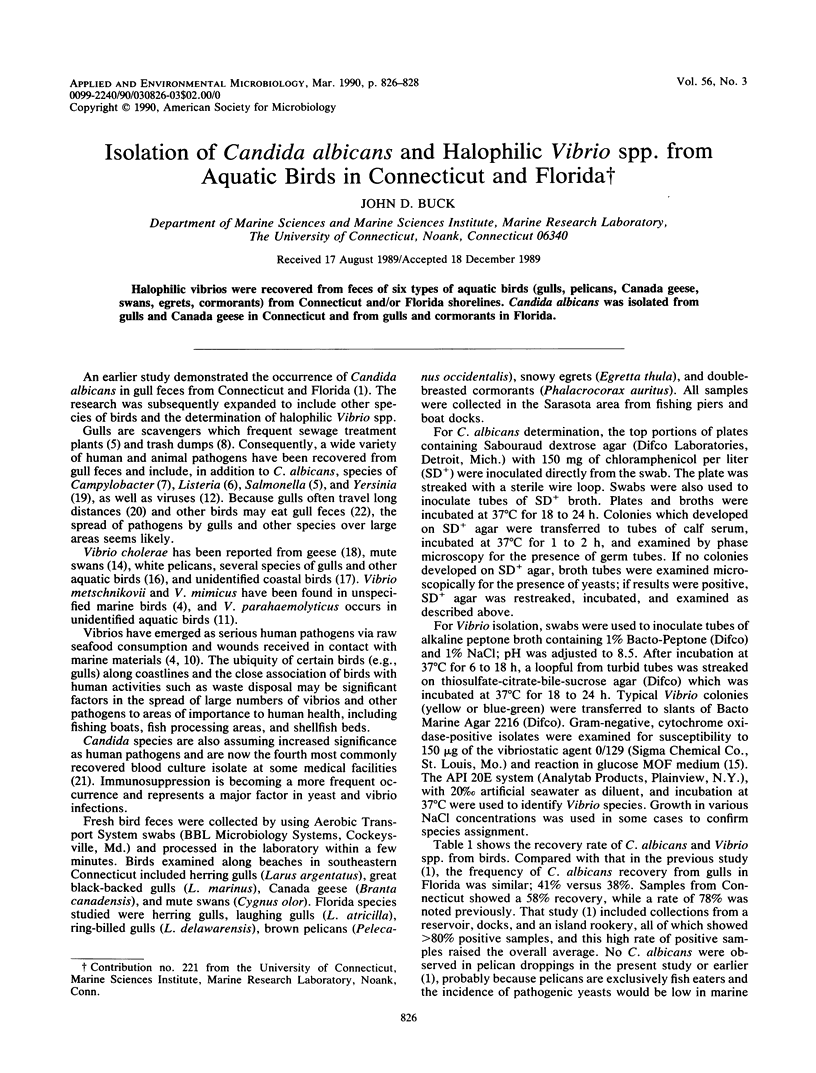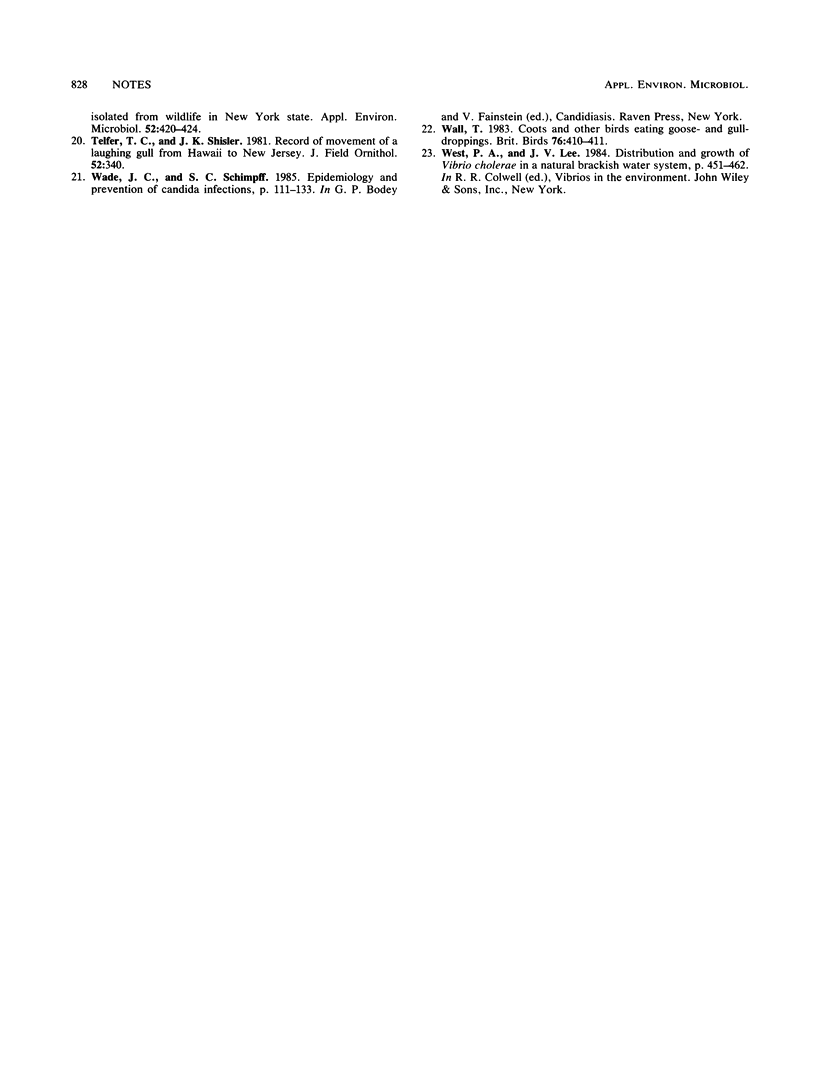Abstract
Halophilic vibrios were recovered from feces of six types of aquatic birds (gulls, pelicans, Canada geese, swans, egrets, cormorants) from Connecticut and/or Florida shorelines. Candida albicans was isolated from gulls and Canada geese in Connecticut and from gulls and cormorants in Florida.
Full text
PDF


Selected References
These references are in PubMed. This may not be the complete list of references from this article.
- Chan K. Y., Woo M. L., Lam L. Y., French G. L. Vibrio parahaemolyticus and other halophilic vibrios associated with seafood in Hong Kong. J Appl Bacteriol. 1989 Jan;66(1):57–64. doi: 10.1111/j.1365-2672.1989.tb02454.x. [DOI] [PubMed] [Google Scholar]
- Fenlon D. R. A comparison of salmonella serotypes found in the faeces of gulls feeding at a sewage works with serotypes present in the sewage. J Hyg (Lond) 1983 Aug;91(1):47–52. doi: 10.1017/s0022172400060010. [DOI] [PMC free article] [PubMed] [Google Scholar]
- Fenlon D. R. Wild birds and silage as reservoirs of Listeria in the agricultural environment. J Appl Bacteriol. 1985 Dec;59(6):537–543. doi: 10.1111/j.1365-2672.1985.tb03357.x. [DOI] [PubMed] [Google Scholar]
- Fricker C. R., Metcalfe N. Campylobacters in wading birds (Charadrii): incidence, biotypes and isolation techniques. Zentralbl Bakteriol Mikrobiol Hyg B. 1984 Oct;179(5):469–475. [PubMed] [Google Scholar]
- Janda J. M., Powers C., Bryant R. G., Abbott S. L. Current perspectives on the epidemiology and pathogenesis of clinically significant Vibrio spp. Clin Microbiol Rev. 1988 Jul;1(3):245–267. doi: 10.1128/cmr.1.3.245. [DOI] [PMC free article] [PubMed] [Google Scholar]
- Kawaoka Y., Chambers T. M., Sladen W. L., Webster R. G. Is the gene pool of influenza viruses in shorebirds and gulls different from that in wild ducks? Virology. 1988 Mar;163(1):247–250. doi: 10.1016/0042-6822(88)90260-7. [DOI] [PubMed] [Google Scholar]
- Kelly M. T., Stroh E. M. Occurrence of Vibrionaceae in natural and cultivated oyster populations in the Pacific Northwest. Diagn Microbiol Infect Dis. 1988 Jan;9(1):1–5. doi: 10.1016/0732-8893(88)90054-5. [DOI] [PubMed] [Google Scholar]
- Lemos M. L., Toranzo A. E., Barja J. L. Modified medium for the oxidation-fermentation test in the identification of marine bacteria. Appl Environ Microbiol. 1985 Jun;49(6):1541–1543. doi: 10.1128/aem.49.6.1541-1543.1985. [DOI] [PMC free article] [PubMed] [Google Scholar]
- Ogg J. E., Ryder R. A., Smith H. L., Jr Isolation of Vibrio cholerae from aquatic birds in Colorado and Utah. Appl Environ Microbiol. 1989 Jan;55(1):95–99. doi: 10.1128/aem.55.1.95-99.1989. [DOI] [PMC free article] [PubMed] [Google Scholar]
- Schlater L. K., Blackburn B. O., Harrington R., Jr, Draper D. J., Van Wagner J., Davis B. R. A non-O1 Vibrio cholerae isolated from a goose. Avian Dis. 1981 Jan-Mar;25(1):199–201. [PubMed] [Google Scholar]


